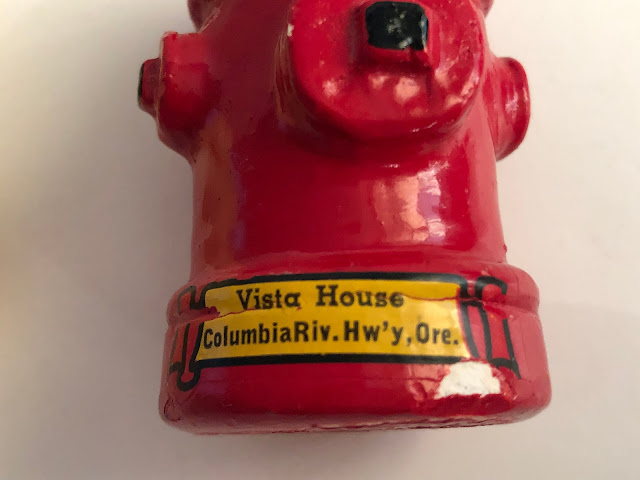Salt and Pepper Shakers: Collecting
Part 3: Getting Started Collecting
It's easy to collect salt and pepper shakers! The hard part is narrowing down what to collect. It may be you want to collect new novelty shakers as souvenirs of travels... (not my souvenir)
...favorite Disney characters, or pretty cobalt blue glass in silver plate filigree to display in a sunny window.
There are shakers for everyone. Birds. Dogs. Cartoon characters. Fruits and vegetables. You could collect only castor sets, mini shakers (individual shakers for each diner, as shown below)…
or hangers. Collect by decade produced (most of mine are from the '40s and '50s), or country of origin. Color. Material. Many will overlap interests. For instance, the Victorian castors appeal to those who collect Victorian tableware, as well as salt and pepper shaker collectors, or milk glass collectors. I collect ceramic dogs, as well as ceramic dog shakers. Or, if you are a tea drinker, you might collect only tea pots…
.JPG)
Salt and pepper shakers can be found in almost any thrift store, for only a few dollars a pair. The most I’ve paid for a pair is $5 for the lusterware pelicans. My Victorian castor set was more, $37.50 on a half-off day. The Golden Gate Expo pair was only $1 from a garage sale. There are collector books published every so often with updated values. Coincidentally, my son found an outdated one in the Goodwill Bins. I'm not interested in values, but it's fun to look at the book!
There are salt and pepper shaker collector clubs, some with international membership and annual conventions. There are salt and pepper shaker museums around the world, one in Tennessee. This site focuses on novelty figural shakers and offers a lot of information.
https://www.saltandpepperclub.com
One more thing.
Is there a way to tell the difference between the shakers, other than one often has an S, the other a P? Yes, there is! These tips are meant for the shakers made in the U.S. as the “rules” differ in other countries. In the U.S., there are two basic ways to tell them apart. One, the holes in the pepper shaker are larger, due to pepper being lighter and larger than salt. Two, salt shakers in the U.S. have fewer holes. In parts of Europe, they are the opposite, salt having more holes. The older ones? Some adhered to this “rule,” with others, your guess is as good as anyone’s! I have several with the same number of same size holes and identical shakers.
Salt and pepper shakers are fun to collect. After all, there aren't many collections that can include multiple sets of peeing dogs! This is another go-with, made by Rio Hondo Pottery of CA (1939 to mid 1950s).



.JPG)





So, which is the salt and which is the pepper when it's a peeing dog? Is the dog always the salt, or is the hydrant?
ReplyDeleteThat's a great question! I never thought to look. Neither of my dog and hydrants are marked, and the holes are all the same size. The Rio Hondo dog has three holes, the hydrant two. The red chalk ware both have four holes, the hydrant's being farther apart, but more like to fit the top of the hydrant than anything else. I guess when the shakers are different it's up to the user to decide which is which... and remember.
Delete